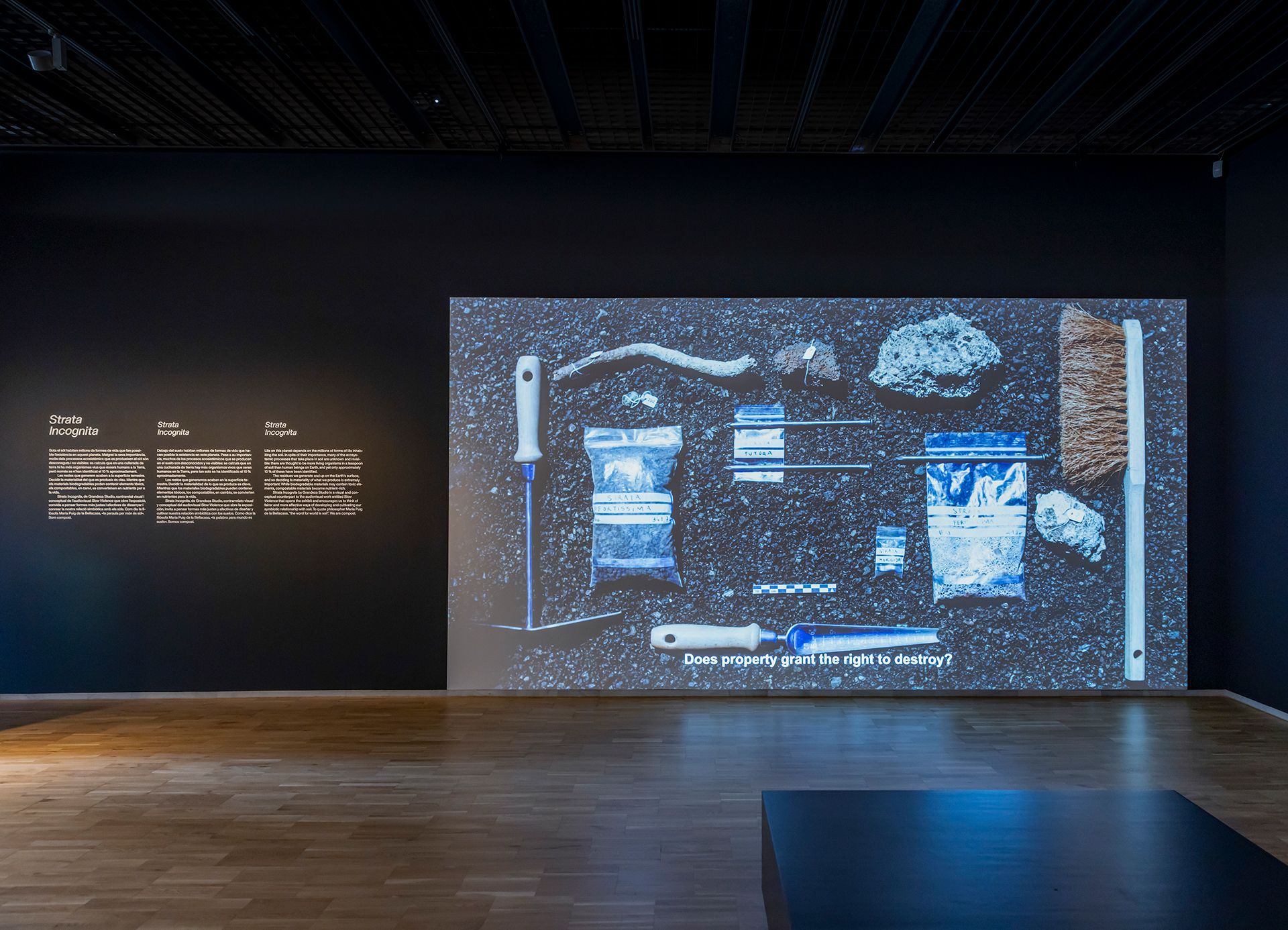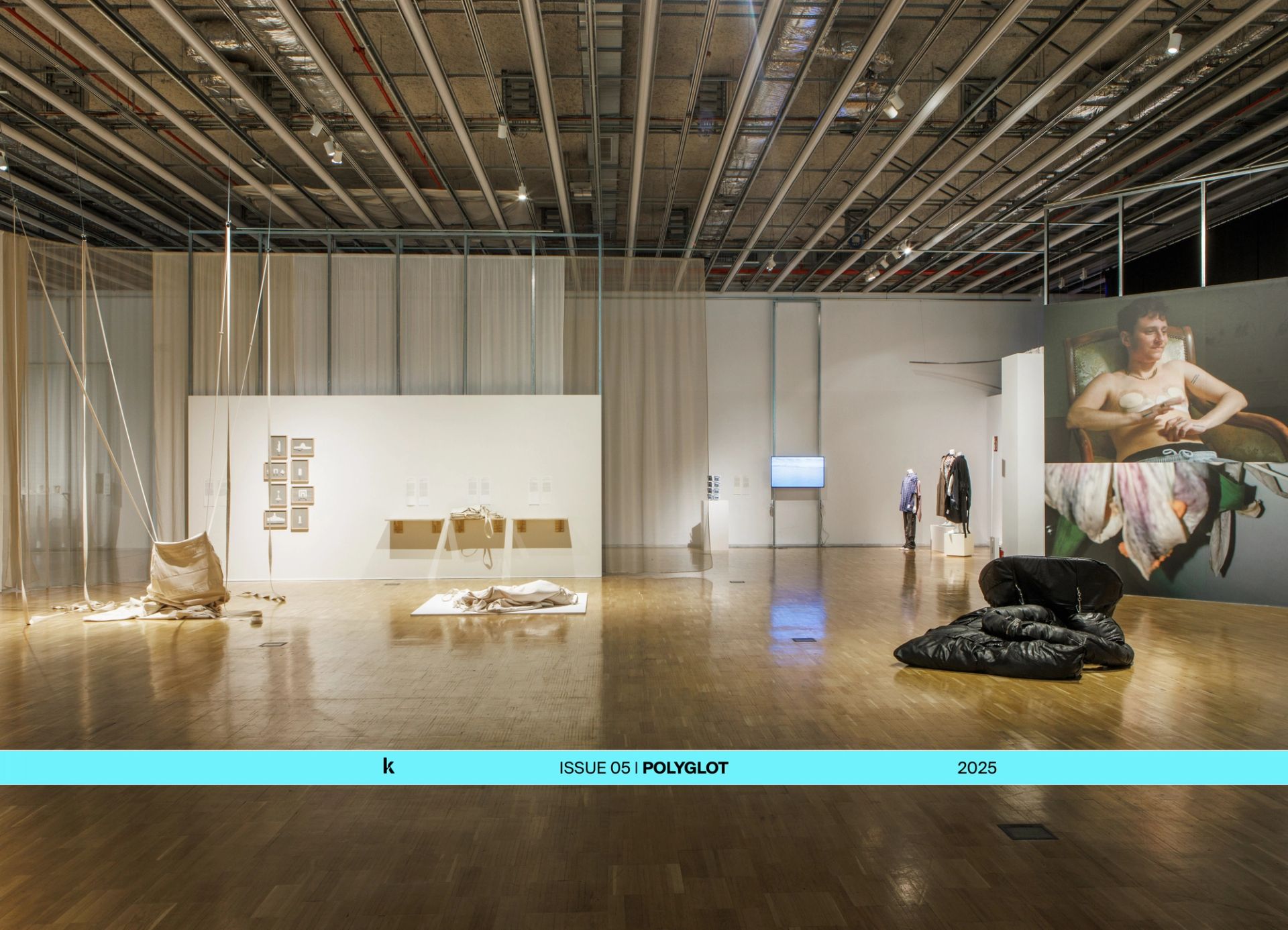Europelago is a research project and current exhibition at Dropcity Convention 2023 that explores the coherence and similarities in the design choices of architectural practices operating in Europe. In this interview with (ab)Normal, a fourside Milan-based architectural collective, we talk about the use of digital modelling, online sharing and formal obsessions in today’s practice, discussing the emergence of collective processes in European architecture and the possibility of identifying the origins of a contemporary design language beyond outdated schools of thought.
This interview was developed as part of the media partnership with Dropcity Convention 2023, winner of the public call Festival Architettura - 2nd edition, promoted by the Directorate-General for Contemporary Creativity of the Italian Ministry of Culture.
KOOZ Europelago stems from the premise that, at the European scale, there seems to be a coherence and similarity in the approaches and design choices of architectural practices operating from within the continent. Beyond the modernist tabula rasa or the regionalism of the genius loci, the projects designed by these practices seem to emerge from a complex ensemble of legal policies, aesthetic references widespread on the web, and digital 3d modeling. What informed the research? In what ways does this stem from an understanding of how (ab)Normal operates as a Milan-based collective?
(AB)NORMAL The research began with a self-analysis of our working method. We feel part of a generation of architects who find their references by exploring the web, who share their formal obsessions through posts, stories, and shared folders. Often, the origins of these images are lost and blurred in the sharing timeline.During this research, we found great similarities with the different processes employed by the various studios, and several similarities in approaches to the use of three-dimensional modelling. It is clear by now that the introduction of sharing platforms and the spread of 3d modelling environments such as Rhinoceros or 3d Studio Max have contributed to a progressive homogenizationand to the emergence of a formal language shared by many European studios. To search for the origin of this language in a supposed historical adherence to a design school turns out to be perhaps a fallacious operation. Rather, it is a natural convergence toward a common and shared approach.
the introduction of sharing platforms and the spread of 3d modelling environments have contributed to a progressive homogenization and to the emergence of a formal language shared by many European studios.
KOOZ The portmanteau “Europelago” derives from the joining of the words “Europe” and “Archipelago”. How does the project understand and explore the notion of the archipelago in relation to the architectural practice itself?
(AB)NORMAL The word “archipelago” comprehensively describes the membership of a well-defined group distinguished by a coherent formal language and, simultaneously, the geographic diversity of this group of designers. The interventions of the studios belonging to Europelago form an imaginary city, consisting of the fragments of many European cities brought together in an incredibly cohesive visual patchwork.
KOOZ As practices which are linked to the fast-changing European situation, one which is both fragile and at times lacking political concreteness, how and in what ways have you observed this condition informing the approach and type of projects produced?
(AB)NORMAL As many historians and geopolitical analysts have noted, the process of state formation passes inexorably through violent stages of social, ethnic and cultural reconfiguration. The European project attempts, often failing, to disrupt this dynamic by setting a course of planned stages, a progressive mutual assimilation promoted through the adoption of common rules. Obviously, this is an extremely slow and frustrating process for those who experience it, albeit a constant and inexorable one. The Europelago exhibition aims to highlight the results of this process of interpenetration between states by showing how the selected young studios imagine, through their projects, the European space and territory.
The Europelago exhibition aims to highlight the results of this process of interpenetration between states by showing how the selected young studios imagine, through their projects, the European space and territory.
KOOZ In her book on Collective Processes. Counter practices in European Architecture, (wherein (ab)Normal is also mentioned as a case study) Natalie Donat-Cattin observes how, in recent years, the European architectural panorama has seen the emergence of a series of collective processes identified as either collectives, groups, or networks. Moving away from the hierarchically organised office with its claim to individual authorship, many of the exhibitors proposed in your exhibition also work and are organised according to similar structures. Before founding the collective (ab)Normal you all worked within hierarchical office structures as for example that of OMA in Rotterdam. What prompted you to found (ab)Normal as a collective practice? To what extent were you able to recognize the same continental traits and similarities within both collective structures and also top down offices?
(AB)NORMAL (ab)Normal began as a shared journal to collect our formal obsessions under one profile. It did not properly begin as an open collective, rather it constituted a very intimate body of work that we had decided to share among the four of us. While not open to receive other members, (ab)Normal was run just like a collective, sharing burdens and honours equally. The works were and still are attributed to the name (ab)Normal, leaving out individual names. It sounds strange, but we learned this collaborative and egalitarian set-up precisely from working at OMA, a place where anyone can express their opinion on projects at the concept stage, and where there is no hierarchy in project groups. Vertical structures tend to carry forward tried-and-true solutions, taking a conservative attitude. OMA has always positioned itself, contrary to the image it projects to the outside world, as an extremely experimental entity. It certainly cannot be called a collective, and yet, it is strongly characterised by a collaborative process that pushes forward the options that are most appealing to the majority of collaborators. In conclusion, through a process of "natural selection" of forms, the projects lose their authorship, taking on the connotations of autocephalous and self-generated entities. From OMA we learned a method beyond personal positions that seeks to identify in infinite variations, the project with the most powerful narrative.
The four macro areas of research—Media, Softwares, Euro-codes and Academy—try to trace the origin of a completely European way of doing architecture.
KOOZ As an exhibition which will be sited within the context of Dropcity and visited by both international and local designers/architects during the buzzing days of the Milanese design week. What are your aspirations for the project?
(AB)NORMAL This exhibition represents the beginning of a long-term research project. We realise that the results exhibited can only be partial, and consequently, are structured to be enriched over time. The four macro areas of research—Media, Softwares, Euro-codes and Academy—are embodied in four large schemes which, imitating Mark Lombardi's complex works, try to trace the origin of a completely European way of doing architecture.
Bio
(ab)Normal is a creative agency engaged in the multidisciplinary exploration of areas such as design, architecture, scenography and graphic design. The project began as a Graphic Novel without chronology, in which outdated 3d objects and unrealized formal obsessions are rearranged into spatial narratives. (ab)Normal has been published in magazines such as Domus, Volume e Abitare and has contributed with his works to various cultural events related to design and architecture, such as the Oslo Triennale (OAT2019), the Ljubljana Biennale (BIO26), The Swiss Architecture Museum (S AM), Triennale of Milan, Haus der Architektur in Graz (HDA). (ab)Normal was founded in 2018 by Marcello Carpino, Mattia Inselvini, Davide Masserini and Luigi Savio.
Federica Zambeletti is the founder and managing director of KoozArch. She is an architect, researcher and digital curator whose interests lie at the intersection between art, architecture and regenerative practices. In 2015 Federica founded KoozArch with the ambition of creating a space where to research, explore and discuss architecture beyond the limits of its built form. Parallel to her work at KoozArch, Federica is Architect at the architecture studio UNA and researcher at the non-profit agency for change UNLESS where she is project manager of the research "Antarctic Resolution". Federica is an Architectural Association School of Architecture in London alumni.





